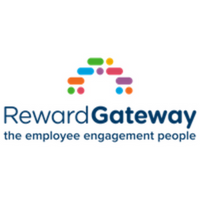Hybrid workforce: a new approach to manage, lead and motivate hybrid employees

If there’s anything we can say with certainty after the past 12 months, it’s that work as we knew it has changed (and if it hasn’t changed all that much for you, it most certainly will!). If we want our teams to thrive in an evolving environment, our management approaches have to change with it.
Here are some changes to put in place to better manage hybrid employees:
Cultivate culture and connection
There has never been a year where open, honest and authentic communication has been more important than in 2021 and beyond. Employees’ locations and the amount of face-time they have with other members of the organisation will impact their access to information and possible influence on business decisions that could impact their employee satisfaction. To counter a potential imbalance, it’s important to provide all employees with the channels to provide feedback on a regular basis.
- Focus on value, not volume. In addition to Zoom fatigue, email and instant-messaging fatigue are real: people are already so overwhelmed in their inboxes it is hard to get them to read emails in the first place. As a manager, you can empower people with relevant, valuable information and give them the freedom to engage with it as and when they need and want it.
- Get rid of the ‘all staff email’. Embrace the power of a centralised, searchable news feed with the option to follow authors and segment messages so that the right people get the right message at the right time. BONUS: No reply all!
- Embrace multi-format digital internal communications. Not everyone wants to read long blog posts. We’ve found that sometimes a two-minute video summarising your key points filmed with your smartphone is all you need. Play around with the layouts of your blogs, too. Use images that break up the text and draw attention to important sections so they don’t go unnoticed.
- Use social cues in technology to spark conversation. Embrace the social features and functionality of blog platforms to encourage reactions, likes and comments. Encourage leaders to engage in these conversations to send the message that these forums are important. This gives you immediate employee feedback from readers and gives them the opportunity to keep the conversation going.
- Make it easy for people to access information. Technology can help provide employees with on-the-go access to the information and resources they need so they can catch up on the commute home or while they’re sitting on their couch. This applies to company communications, as well as recognition, reward and even employee wellbeing resources. Think about what work-life integration really looks like. It’s reading an update from your CEO and sending someone an eCard while waiting in line at the coffee shop, and using the same platform to do a 20-minute ClassPass exercise video during your lunch break, and then a 10-minute mindfulness session at the end of your workday. It’s all about meeting your people where they are, and technology can help you do just that.
- Create an environment for instant feedback. We know that Annual Performance Reviews and Annual Engagement Surveys are too few and far between. A year of constant disruption shows that annual anything is definitely ‘too little’ (and action on the outdated feedback is definitely ‘too late’). Add polls and pulse surveys to your existing communication channels. Instead of releasing long-winded surveys that take 10 minutes to complete, send out one or two questions about something you/your team can act on, quickly.
Provide purpose and inspiration
While leadership visibility is always important, in a remote or dispersed workplace environment, it’s even more critical as employees look to their leaders for direction. When senior leaders speak, employees listen. Using a platform to increase awareness of the company strategy and mission – and, importantly, how employees can contribute to that mission – can help keep employees focussed and engaged on advancing business objectives.
- Schedule frequent (ideally, weekly) one-to-ones. And most important, resist the urge to skip them! Get a recurring meeting in your diary and commit to connecting – whether it’s over coffee, lunch, Zoom or a good old-fashioned phone call. Use that time to catch up on life outside of work as well as what’s on your business-related to-do list. Take the time to ask the question: “What are you proud of?” to push beyond the basics to the hidden successes. Connect on a human level.
- Tap into the power of peer-to-peer recognition. Over the last few months, it’s been incredible to see the impact that meaningful, strategic recognition has on reinforcing a person’s sense of belonging and contribution. A recognition tool enables employees to celebrate the success of their peers by interacting in a social environment, making those at home feel more connected to their colleagues.
- Give your employees a voice to drive change. While a weekly CEO update may be an important part of your employee communications calendar, empowering others in your business outside of the Leadership Team to blog and contribute to communications can create the space for open and honest communications, while creating visibility for initiatives that might not often get the spotlight.
Support employees’ financial, physical and mental wellbeing
Employee wellbeing is essential not only for employees’ mental, physical and financial health, but also for productivity and morale, and those all-important business results. Proactive and preventative wellbeing benefits can have an incredible impact on the lives of employees and in turn, the work they do.
Here are some ideas on how employers can provide affordable, cost-effective employee wellbeing initiatives to support your people and boost an Employee Value Proposition to appeal to a hybrid workforce:
- ease the burden of working remotely (e.g. introduce a working from home package, kids club)
- provide a free Employee Assistance Programme so your people have a safe space to go to when they’re in need of extra support during challenging times.
- promote personal development with a ‘Book Benefit’
- offer access to on-demand videos and articles to support all pillars of employee wellbeing, from financial to mental and physical. Employees can pick and choose what to engage with and can access helpful wellbeing support at any time.
- form interest-based networks (e.g. cooking, hiking, parents)
- add a wellbeing allowance benefit to give a little extra money towards wellbeing initiatives of your employees’ choosing.
As we shift the gears and create a ‘new business as usual’, leaders are going to need a new approach to successfully motivate and inspire a new type of workforce.
Finding the right mix of tools and technology that grows with you and your employees is a must to keep them engaged and productive in the long term. How will you and your teams adapt to hybrid work as the new normal?
The author is Robert Hicks, group HR director at Reward Gateway.
This article is provided by Reward Gateway.
Supplied by REBA Associate Member, Reward Gateway
We help the world's leading companies with an employee engagement platform.







